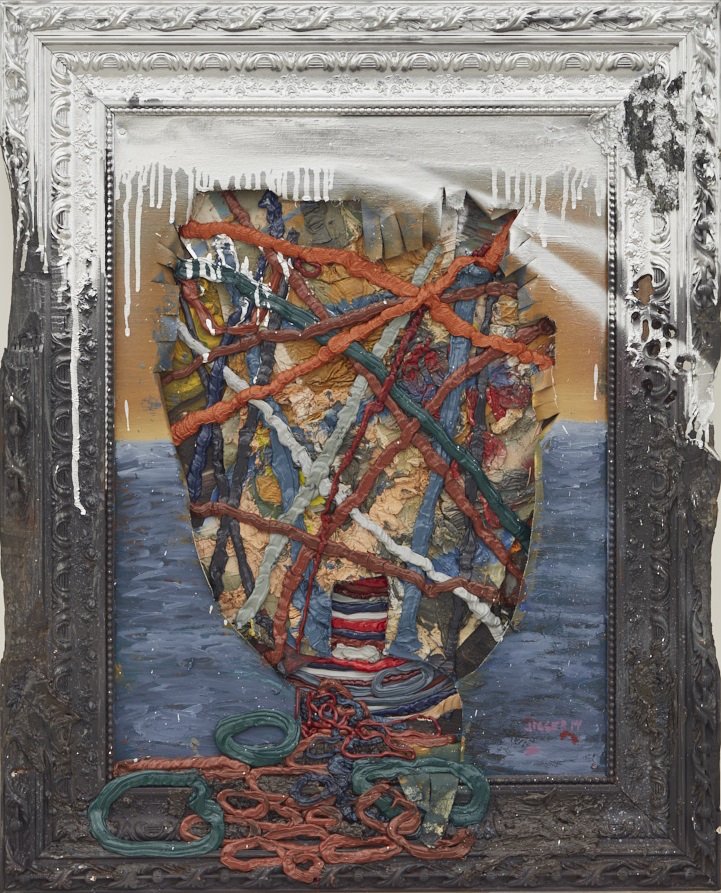Southeast Asian Artists Engage with Gender Fluidity
New Singapore gallery Hatch Art Project creates a space for young artists
By Chay Weiqin
Jeong-Mee Yoon, ‘Seunghuk’, 2007, 2.5 x 2.5m, photograph on PVC banner. Image courtesy of Hatch Projects.
‘Deciphering Clothes: The Troublemakers’ Wardrobe’ is the last of the three-part ‘Deciphering’ series at Hatch Art Project. Since its inception in June this year, the contemporary art gallery has featured several emerging artists, in keeping with their focus of providing a platform for young artists in Asia to develop their artistic practices.
On view from 15 November 2018 to 12 January 2019, the group show, which presents the work of 11 Southeast Asian artists and a South Korean artist, confronts the ambiguity of gender identities and surveys the collective consciousness of LGBTQ+ movement in the region. Prices for the artworks range from SGD343 for a smaller work by Nguyen Quoc Dung to SGD14,000 for one by Yoon Jeong-Mee. As the exhibition title suggests, peering into one’s wardrobe promises an intimate dialogue through the artists’ engagement with the clothed and unclothed body.
Leeroy New, ‘Aliens of Manila x DaDaoCheng (coloured)’, 2018, industrial pipes, plastic tubes, micropipettes, cable ties, marker cones, plastic tweezers, plastic scoops, funnels, dimensions variable. Image courtesy of Hatch Art Project.
As such, a common thread that runs through the selection of artworks is the relationship between the material and the corporeal. One of the highlights of the exhibition is Filipino artist Leeroy New’s wearable artworks, which he constructs from found objects such as industrial pipes and plastic tubes. The sculptural costumes, priced between SGD3,420 to SGD4,000, are part of the ‘Aliens in Manila’ series which morphs the wearer into an intriguing genderless creature.
nor likewise explores the transformative ability of clothes in expressing her gender identity. Collaborating with Vimal Kumar, the Singaporean duo presents two canvases combining photography and oil painting. In the exhibition catalogue, both artists discuss extensively how religion plays a part in shaping one’s gender and sexual identity
Vietnamese artist Nguyen Quoc Dung’s works document the centrality of dressing up to the identities of transgendered persons, revealing at once the boldness and vulnerability of the marginalised community. The confrontational approach in Nguyen’s artworks embody and channel the brazen tone that is also seen in how other “troublemakers” question the idea of traditional normativity.
Nguyen Quoc Dung, ‘Transgendered Life #5’, 2018, 45 x 50cm, oil on canvas. Image courtesy of Hatch Projects.
While the wide array of mediums spanning from sculpture, performance, painting, installation, digital manipulation to photography offers a strong visual spectacle, the overarching theme of clothes grounds the discussion and is apt in establishing a sense of familiarity with the viewer.
The juxtaposition of artworks encourages conversation that paces between topics on gender and sexual identities, while averting a clear definition on the two. This discourages a binary approach, and also provokes and inspires new interpretations of unconventional expressions of gender and sexuality.
Other artists participating in the exhibition include Tan Xiao Xuan from Malaysia, Martin de Mesa and Denver Garza from the Philippines, Vienasty Rezqina, Atreyu Moniaga and Riki Sumardianto from Indonesia, Lananh Lê from Vietnam and Jeong-Mee Yoon from South Korea whose photographs call out the contemporary practice of ascribing pink and blue in consumer products to girls and boys respectively.







